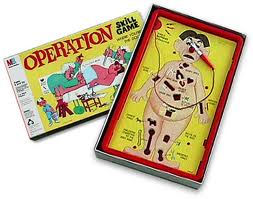Source: Joint Commission Center for Transforming Healthcare
 In a shocking report which demonstrates that calls for “Tort Reform” are premature, surgeries performed by doctors on the wrong part of the body, occur 40 times per week in hospitals across the United States. The Joint Commission is the credentialing body which surveys US hospitals for, among other things, safety. The Center for Transforming Health Care has made the focus on preventing wrong-site surgeries a priority.
In a shocking report which demonstrates that calls for “Tort Reform” are premature, surgeries performed by doctors on the wrong part of the body, occur 40 times per week in hospitals across the United States. The Joint Commission is the credentialing body which surveys US hospitals for, among other things, safety. The Center for Transforming Health Care has made the focus on preventing wrong-site surgeries a priority.
Wrong-site surgery includes invasive procedures on the wrong patient in addition to wrong-procedure, wrong-site, and wrong-side surgeries. In 2010, it was the third most common sentinel event reported according to the researchers.
While this is concerning enough, participants only numbered 8 hospitals and ambulatory surgery centers. (Imagine at just how many hospitals this could be occurring!) Problems were found with scheduling and preoperative/holding processes, as well as ineffective communication and distractions in the operating room.
“The 8 hospitals and [ambulatory surgery centers] identified where errors can creep into the process and took steps to correct them,” Mark R. Chassin, MD, FACP, MPP, MPH, president of the commission, stated. “Unless an organization has taken a systematic approach to studying its own processes, it is flying blind.”
Wrong-site surgeries are still classified as relatively “rare” events. Research has shown that such events are frequently the result of a cascade of small errors. The 8 facilities found that addressing documentation and verification issues in the preoperative/holding areas were a large factor. The biggest factor, incredulously, appears to be inadequate information about the patient. Often, the information is taken by non-physician staff in the surgeon’s office, who may have to deal with several hospitals and different protocols. Confusion can result.
Marking the incision site varies greatly within facilities, increasing the risk for a preventable error. “In the past, the mark was made in the holding area,” said Mary Reich Cooper, MD, JD, senior vice president and chief quality officer of Lifespan Corporation, which has 4 hospitals in Providence, Rhode Island. “Sometimes, the mark was washed away during the prep,” according to Dr. Chassin. “So make certain that only approved indelible pens are used. This was a simple but important intervention.”
Time-outs were handled inconsistently in several locations. “At the time-out, we stop all activities so we can all focus on this last opportunity to correct a mistake,” said Dr. Cooper.
The 8 facilities that volunteered for the project (included 3 in the NY, NJ, PA region) are AnMed Health, Anderson, South Carolina; Center for Health Ambulatory Surgery Center, Peoria; Holy Spirit Hospital, Camp Hill, Pennsylvania; La Veta Surgical Center, Orange, California; Lifespan-Rhode Island Hospital, Providence; Mount Sinai Medical Center, New York City; Seven Hills Surgery Center, Henderson, Nevada; and Thomas Jefferson University Hospital, Philadelphia, Pennsylvania.
post: Gayle R. Lewis, Esquire
